CSI 7 Suspects
Gaia Grant the 7 Creative Killer Suspects
A quick summary of the 7 creative killer suspects (Worktech13 Melbourne) (5 mins)
The 7 ‘Most Wanted’ Creativity Killers
How creative thinking can be stifled
A crime scene investigation is underway to investigate a death. This is not an average death, this is the possible death of creative thinking. You see while IQ levels have been rising owing to enriched environments (the Flynn effect), creativity scores (CQ) have actually been falling over time. After analysing up to 300,000 Torrance scores from children and adults (the gold standard in creativity measurement), it has been discovered that although creativity scores rose along with IQ scores until 1990, creativity scores have since dropped.
This decline is also evident across an individual’s lifespan. Research into the decline of creativity has led to some startling conclusions. In a sample of 1500 children aged 3–5, 98 per cent ranked as ‘geniuses’ in divergent thinking; in children aged 8–10 the figure fell to just 32 per cent; and by age 13–15 it had declined further to a mere 10 per cent. In other words, children become less creative as they grow older. Moreover, in a control test of 2000 adults (aged 25+), only 2 per cent ranked as geniuses.
When, more than 50 years ago, American psychologist E. Paul Torrance began identifying the key elements in creative thinking and assessing individuals according to these criteria, he had no idea what these assessments would eventually reveal. Torrance and his colleague Garnet Millar, who followed individuals over time, found that the qualities they identified in young children were major predictors for creative professional success. By looking at the lifetime data Torrance and his associates collected, and reanalyzing it, it was found that the correlation to lifetime creative accomplishments is nearly three times stronger for childhood creativity than it is for childhood IQ.
It’s time to identify and deal with the creativity killers. Through our surveys of thousands of workshop participants from a range of backgrounds and experiences over more than 20 years, we have narrowed down the list of suspects to 7 key profiles. By recognizing
and managing these effectively, we believe it will be possible to revive and nurture creative thinking. Allow us to take a creative approach to interrogating these (fictional) murder suspects:
Take our sur vey now to help iden tify &catch these suspects:
https://whokilledcreativity.com/resources/survey/
THE SUSPECTS |
STRATEGIES FOR DEALING WITH THESE SUSPECTS |
| PROFILE 1: THE CONTROL CREW | |
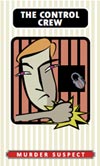 Also known as bully oppressors, the ‘control’ killer profile tends to stifle creative thinking through suppressing the ability to think freely and independently. When systems are set up that restrict freedom of thought, and when individuals perpetuate those systems through controlling approaches and actions, creativity has no room to flourish. Like the Italian mafia, the control killers can operate through a coercion which instills fear, which can then itself become a killer. |
|
| PROFILE 2: THE FEAR FAMILY | |
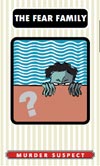 An often unsuspecting killer profile that can intimidate the most intrepid, this highly prolific villain thrives on anxieties about trialling new ideas and the possibility of failure. A childlike ability to take risks and risk failure without fear is critical to creative thinking, but when anxiety intervenes the fear can be crippling. A recent advertising campaign from Apple picked up on the fact that fearlessly creative people are prepared to risk failure, and it’s not surprising that Apple’s motto is to ‘fail wisely’. |
|
| PROFILE 3: THE PRESSURE PACK | |
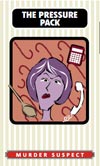 This seductive assassin dispatches its victims by exercising a stranglehold of real or perceived expectations. The faster pace of life, a greater reliance on technology, and significantly increased communication speeds, have all contributed to its prevalence. Under pressure, the body’s instinctive response is ‘fight, flight or freeze’. The constant adrenaline need for the ‘fight’ response can lead to dangerous physical and psychological symptoms and ultimately literally shut down the brain, and the ‘flight’ and ‘freeze’ responses can lead to an inability to face up to the pressure and deal with it effectively. By using up precious mental energy at the primitive brain stem simply for survival, thus limiting access to the pre-frontal cortex where real creative thinking can occur, this killer restricts the ability to be creative. |
|
| PROFILE 4: THE INSULATION CLIQUE | |
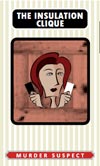 Also known as isolating killers, those fitting the insulation profile employ a lethal combination of segregation and homogeneity that can lead to biased conformity. They quarantine their victims from different ideas and information, denying them exposure to a diversity of opinions and therefore access to potentially life-saving devices. In the same way that placing prisoners in solitary confinement limits their experiences and restricts their brain capability, insulation confines the victims’ experiences and limits their capabilities over the long term. When information sources are limited in content but overwhelming in quantity, the brain simply can’t cope, and will stick with the safe secure options rather than trialing creative new ideas. A lack of diversity in teams and organizations at all levels can also limit creativity. |
|
| PROFILE 5: THE APATHY CLAN | |
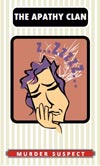 Murderers fitting the ‘apathy’ profile lack motivation and drive. These villains are often themselves victims of systems that have deadened their will to succeed, and the profile can often be detected in those with cutting sarcasm and acerbic cynicism. An apparent lack of motivation, concern or passion can be twisted into a deliberate ‘stab in the back’ or a ‘cutting remark’. A major finding Malcolm Gladwell reached through his research was that, rather than simply a genetic inheritance, successful genius is cultivated through a potent mix of lucky circumstance and sheer hard work, so apathy has no place in the process of creative development. |
|
| PROFILE 6: THE NARROW-MINDED MOB | |
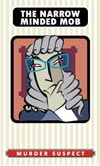 With a stubborn and often headstrong approach, killers fitting the ‘narrow-minded’ profile ensure their dupes remain trapped in their standard, familiar patterns of behaviour. Victims are unwitting casualties of their own habitual ways of thinking and behaving. Narrow-mindedness leads to convergent thinking, and the full creative process requires divergent thinking before a specific focus is chosen. Human thought patterns tend to slip into these standard channels, or set ways of thinking, if they are not regularly challenged. The brain seeks to organise its thoughts — often in response to incoming information — into temporarily stable states that succeed each other to give a sequence. When a sequence or pattern is repeated, it becomes a thought-pattern or mindset that channels future thoughts more easily along the same path. It thus becomes a habitual standard way of looking at a situation or problem. Blinkered expertise, prejudice and groupthink are all examples of the way narrow-mindedness can manifest itself. |
|
| PROFILE 7: THE PESSIMISM POSSE | |
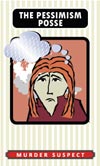 Another stealthy killer which operates like a chemical weapon, this profile type subtly perpetrates destruction through a toxic mindset. Sufferers of the disease initially communicate in negative ways, and eventually undermine their own and others’ attempts at creative thinking. Pessimists tend to blame themselves when things go wrong, becoming more reluctant to try again with each negative experience. Most people would most likely be unaware that as humans we have developed a natural bias against creative thinking, which interferes with our ability to recognisea creative ideas when we come across them, so it is important to recognize the profound influence of this creativity killer profile and deal with it. |
|
If these creativity killers can be identified upfront then (and they will be different for every company and team), then leaders can
start to proactively do something about it, rather than be passive victims. Who Killed creativity? What weapons did they use, and where? Was it X.S. Stress in the Executive’s Office with ‘crushing coercion’? Or was it Beau Rock-Racy in the Accountant’s office with ‘noxious negativity’. Only when these can be identified in each specific organization, can the appropriate “rescuers” and “strategies” be implemented. So often money and time is wasted on solutions that eventually make very little or no impact – the major reason for this is that solutions are generated before the essence of the problem is understood. In our research we have attempted, in a fun and creative way, to identify the killers and blockers of creativity in the organization and identify the solution processes that will get the desired results.
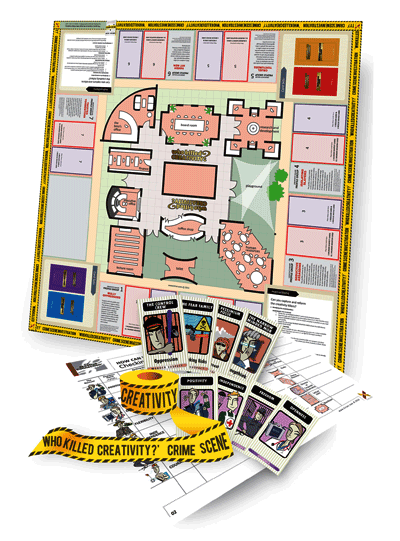
It forms part of the full CSI suite of programs, which are designed to help individuals teams and organisations develop a more creative and innovative culture. More resources including videos, articles, interviews, licensing,and self-facilitated down-loadable workshops are available at www.whokilledcreativity.com


